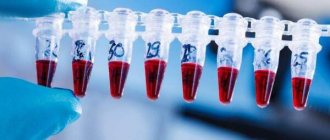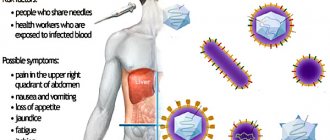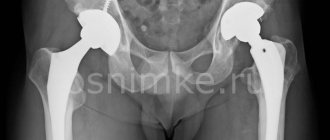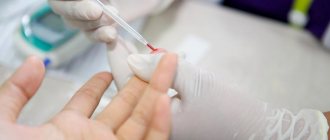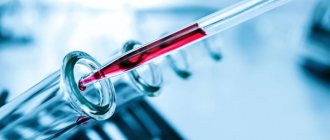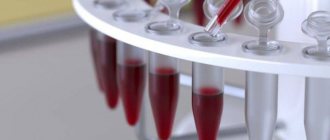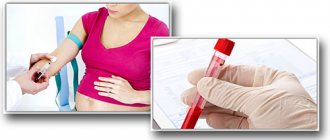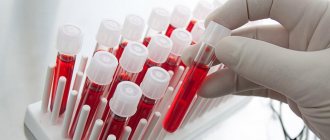According to the concepts of modern medicine, the prevalence of viruses on the globe belongs to viruses. Humanity had to use a lot of strength and resources to fight them. An extremely important role is played by the diagnosis of viral liver damage, in particular viral hepatitis C. Correct interpretation of laboratory parameters to identify this disease is difficult due to the large number of false-positive blood test results. Therefore, the correct choice and interpretation of the research is so important.
Virus detection methods
The hepatitis C virus (hcv) is a small strand of RNA inside the viral envelope that uses genetic material from liver cells to reproduce. Their direct contact leads to:
- Triggering the inflammatory process in the liver;
- Destruction of liver cells (cytolysis);
- Launching immune mechanisms with the synthesis of specific antibodies;
- Autoimmune aggression of immune complexes against inflamed hepatocytes.
The hepatitis C virus, entering the body, causes a very slow immune response, which leaves it undetected for a long time. The disease is often detected only at the stage of liver cirrhosis, although viral particles and their corresponding antibodies circulate in the blood all the time. All known methods for diagnosing hcv infection are based on this. These include:
- Serological tests in a laboratory;
- PCR diagnostics (polymerase chain reaction);
- Rapid tests to determine the disease at home.
Important to remember!!! Diagnosis of viral hepatitis C is quite difficult. This is due to the high mutating ability of the pathogen. In a short period of time, it is able to acquire new antigenic properties, which makes it practically invisible to immune cells and serological diagnostic tests.
Video about hepatitis C:
Basic biochemical blood tests for hepatitis C
Biochemical blood tests help establish the functional state of many human organs and systems.
Blood test for liver enzymes ALT and AST
Liver enzymes are synthesized intracellularly. They take part in the synthesis of amino acids. A large number of them are found in the cells of the liver, heart, kidneys and skeletal muscles. When organs are damaged (violation of the integrity of cell membranes), enzymes enter the blood, where their levels increase. Increased levels of enzymes are recorded with damage (lysis, destruction) of liver cells, myocardial infarction and other diseases. The higher the level of transaminases in the blood serum, the more cells were destroyed. ALT predominates in liver cells, AST predominates in myocardial cells. When liver cells are destroyed, the ALT level increases 1.5 - 2 times. When myocardial cells are destroyed, the AST level increases 8-10 times.
When diagnosing chronic viral hepatitis, it is necessary to pay attention to the AST/ALT ratio (de Ritis coefficient). An excess of AST over ALT indicates liver cell damage
- The AST norm for men is up to 41 units/l, for women - up to 35 units/l, for children over 12 years old - up to 45 units/l.
- The ALT norm for men is up to 45 units/l, for women - up to 34 units/l, for children 12 years of age and older - up to 39 units/l.
- Normally (in healthy people), the AST/ALT ratio ranges from 0.91 to 1.75.
Blood test for bilirubin
Bilirubin is a breakdown product of hemoglobin. Bilirubin in the blood is contained in the form of indirect (up to 96%) and direct (4%). The process of decomposition of this substance occurs mainly in the liver cells, from where it is excreted from the body with bile. When liver cells are destroyed, the level of bilirubin in the blood serum increases. Normally, the content of total bilirubin is less than 3.4 - 21.0 µmol/l. At a level of 30 - 35 µmol/l and above, bilirubin penetrates the tissues, causing the skin and sclera to become jaundiced.
Rice. 6. Jaundice is one of the signs of liver damage.
RELATED LINKS
- hcv
- How to treat hepatitis C
- What is hepatitis C
- What is hbsag
- Rapid tests for HIV
Articles in the “Hepatitis C” section
- Basic tests for hepatitis C
Most popular
- All about foot fungus: symptoms and effective treatment with modern drugs
- Scalp fungus: how to recognize and treat
- Symptoms and treatment of fingernail fungus (onychomycosis)
- The benefits and harms of E. coli
- How to treat dysbiosis and restore microflora
Articles in the “Hepatitis C” section
- How is hepatitis C transmitted? Microbiology of the HCV virus
About germs and diseases 2019
Possible indications for research
Anyone can get tested for hcv infection. No special indications are needed for this, other than the person’s desire to undergo this blood test. But there is a category of persons who are subject to mandatory research. These include:
- Blood donors;
- People who have received a transfusion of blood, its components or drugs based on it;
- Increased levels of liver transaminases (ALAT, AST), especially after previous surgical interventions, childbirth and other medical procedures;
- Suspicion of viral hepatitis C or the need to exclude this diagnosis;
- Negative tests for hepatitis B virus in the presence of symptoms of liver inflammation;
- Monitoring the effectiveness of therapy for hcv infection and resolving issues regarding further treatment tactics.
At-risk groups
The risk group is numerous:
- doctors and nurses who perform blood collection, transfusions, and surgeries;
- drug addicts, prostitutes, homosexuals;
- patients who need donor blood;
- patients with irreversible kidney damage;
- people who have promiscuous sex.
This is interesting: Hepatitis C: ways of transmitting the virus from person to person
Blood with the HCV virus can be transmitted through promiscuity, infected syringes, during childbirth, and poorly treated instruments in salons and hospitals. The pathogen is not transmitted in everyday life with dishes, during breastfeeding, or through the air.
Features of serological diagnosis and evaluation of results
A laboratory blood test for hcv involves the detection of antibodies (immunoglobulins) of classes M and G to the antigenic components of the hepatitis C virus. For this, enzyme-linked immunosorbent assay (ELISA) and radioimmunoassay (RIA) reactions are mainly used. Laboratory methods for detecting antibodies are considered the most reliable, since they allow the use of several antigenic complexes of the most common types of hepatitis C virus as reagents.
For the study, about 20 milliliters of venous blood is taken from a peripheral vein. It is centrifuged and settled to obtain plasma (the transparent liquid part). Formed elements and sediment are removed. To exclude false-positive results, it is better to take blood samples in the morning before meals. A few days before this, it is advisable to avoid taking medications, especially those that affect the state of the immune system.
The results of the analyzes can be presented as follows:
- Hcv – negative. This means that no antibodies to the hepatitis C virus were detected in the body. There is no disease;
- Hcv – positive. This indicates the presence of antibodies to the hepatitis C virus in the blood samples being studied. The person has either had this disease or is currently suffering from an acute or chronic form of it;
- Anti-hcv IgG detected. In this case, you should think about chronic viral hepatitis C;
- Anti-hcv IgM detected. Its isolated presence indicates an acute process, and its combination with anti-hcv IgG indicates an exacerbation of a chronic one.
Rapid testing for hcv is the first step in detecting the disease
What does an indeterminate hepatitis test result mean?
An indeterminate result of an enzyme immunoassay is the presence in the biomaterial of a small amount of antibodies to the pathogen, in which it is impossible to refute or confirm infection. Doubtful data guides the hepatologist to further monitor the patient.
Reasons for an indeterminate anti-HVC test result:
- early stage of hepatitis;
- insufficient sensitivity of the test system;
- non-compliance with the rules for collecting biomaterial.
Medical literature data on the presence of genetic material in the blood with weakly positive ELISA are contradictory. Additional tests are performed to confirm infection.
It is possible to obtain false-positive ELISA results for rheumatoid factor in the blood of patients suffering from systemic lupus erythematosus, Sjogren's syndrome, rheumatoid arthritis or parasitic infections.
Features of express testing
Anyone can do a blood test for hcv on their own. This became possible thanks to the creation of special test systems for the rapid diagnosis of viral hepatitis C. Their effectiveness is inferior to laboratory serological methods, but is excellent for approximate determination of possible infection in a short time.
We recommend reading the article: What is RDW CV in a blood test
You can purchase or order a test system at any pharmacy. It includes everything needed to carry out the test. The analysis begins by opening the sterile container and preparing all components. After treating the finger with a special napkin with an antiseptic, it is carefully pierced with a scarifier. Using a pipette, 1-2 drops of blood are collected and transferred to the well on the test tablet. 1-2 drops of the reagent from the bottle that is part of the test are added to the blood. The result should be assessed after 10 minutes. It is extremely important not to evaluate the result later than 20 minutes due to the possibility of a false positive result.
The blood test performed can be assessed as follows:
- One purple line appeared in the tablet window (test negative). This means that antibodies to hcv were not detected in the blood tested. The person is healthy;
- Two purple stripes appeared in the tablet window (test positive). This indicates the presence of antibodies in the blood being tested and the connection of the body with viral hepatitis C. Such people are subject to more thorough methods of serological diagnosis without fail;
- Not a single line appeared in the tablet window. The test system is damaged. Repeat testing is recommended.
Important to remember!!! Antibodies to the hepatitis C virus appear in the blood 9-12 weeks after infection. For greater diagnostic reliability, serological methods must be combined with PCR blood testing for hcv!!!
The hepatitis C virus contains RNA and has low antigenic activity
Positive Anti-HCV total
Normally, Anti-HCV antibodies are not detected. This test is specific and is prescribed only to detect hepatitis C.
Anti-HCV total gives a positive result if a person’s blood contains antibodies aimed at fighting the virus. Typically, this indicator indicates liver damage from hepatitis C.
This is interesting: Which doctor should I see if I have hepatitis C?
There are two types of antibodies Anti HCV total. Type “G” is recorded in the chronic form of the disease, as well as in cases of acute illness. Detection of type “G” antibodies in the blood of Anti-HCV is possible after 10 weeks of illness. Peak activity occurs six months after infection.
Type “M” Anti-HCV is detected 5 weeks after the infection enters the blood. This indicator indicates that a person is infected with hepatitis C. In the chronic form, its presence indicates the beginning of the exacerbation stage.
The presence of antibodies to infection is possible in the case of a previous illness. Antibodies of type “M” in the Anti HCV analysis are observed exclusively in the acute stage, accompanied by severe symptoms.
Features of PCR diagnostics
Polymerase chain reaction is the most modern way to detect the genetic material of any cells. For viral hepatitis C, the method allows you to detect RNA molecules of viral particles. This can be done using qualitative and quantitative methods. The first method may not be informative if the number of viral particles in the blood being tested does not reach the threshold value. The second method allows you to accurately indicate the number of detected viral RNA chains and is more sensitive.
The analysis performed can be represented by the following results:
- No Hcv RNA was detected. This means that there are no viral particles in the blood being tested;
- hcv RNA detected. This indicates infection with hepatitis C;
- A quantitative hcv PCR test is carried out to assess the degree of infection in the patient’s blood and the activity of virus reproduction in the body. A blood viral load of 600 to 700 IU/ml is considered high. Indicators above this figure are called very high, below it - low viral load in the blood.
A blood test for hcv when diagnosing viral hepatitis C is the only informative, accessible and harmless method for verifying the diagnosis. Correct interpretation and combination of different methods of its implementation minimize the number of diagnostic errors.
False positive test
In some cases, Anti-HCV tests give a false positive result. Reasons for false positive results: the presence of autoimmune diseases, the development of tumors, acute infectious lesions.
If a patient has symptoms of hepatitis C, additional tests should be performed to diagnose hepatitis. An accurate way to determine the virus is to donate blood for HCV RNA, which determines the presence of the antigen. Depending on the results obtained, further treatment measures are prescribed. The absence of antigen indicates a false positive result or a previously latent form of the disease.
This is interesting: Can hepatitis C cause fever?
How is blood drawn?
Before donating blood for a study that can evaluate the functioning of organs, check metabolism and the need for minerals and vitamins, you need to fulfill a number of requirements:
- Mental and physical stress must be avoided.
- For two days you should not drink alcohol or eat heavy food. Fatty and fried foods are excluded. It is better to eat easily digestible foods.
- You are allowed to drink water before taking the test.
- Blood is taken in the morning on an empty stomach from 8 to 11 o'clock. This is due to the fact that it is during these hours that the presence of hormones most closely matches the actual indicators.
- Blood is taken from a vein and laboratory testing is performed to determine the presence of antibodies and antigens in the blood plasma. As a biomaterial, venous blood is of higher quality than capillary blood. You can donate blood during the day, but before collection it is important not to eat for 4-6 hours. These rules are necessary to prevent false results.
This is interesting: Is hepatitis C dangerous for others: can you get infected?

